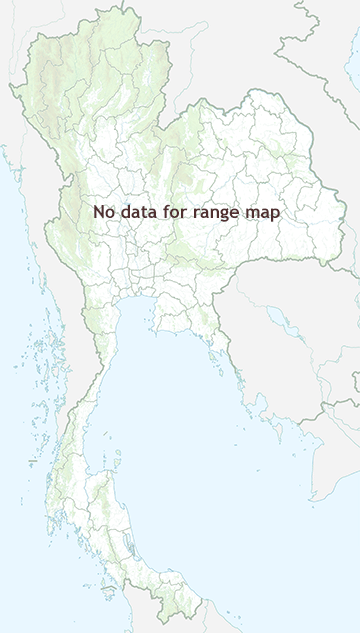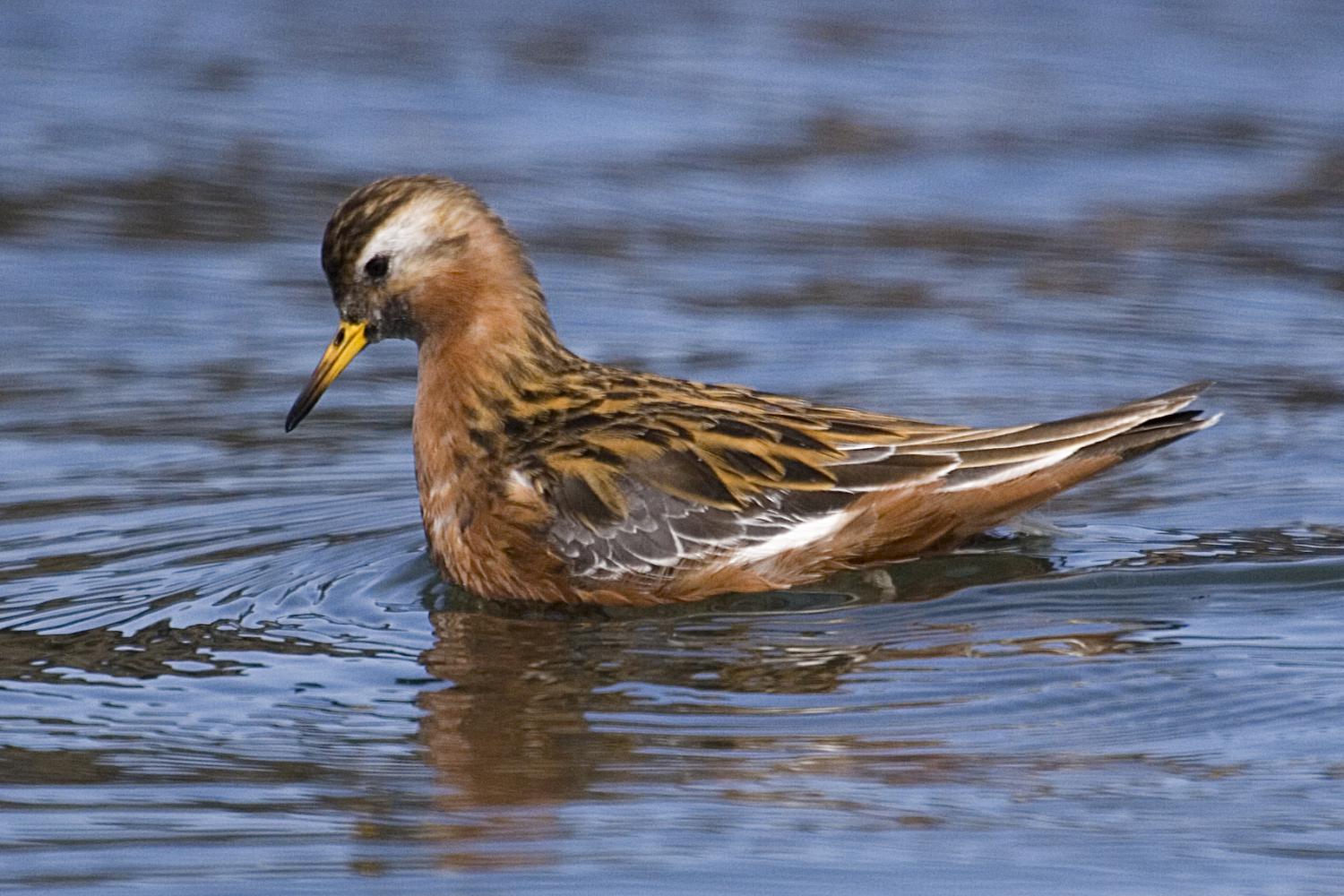Species of Thailand
Red phalarope
Phalaropus fulicarius
Carl Linnaeus, 1758
In Thai: นกลอยทะเลสีแดง
The red phalarope or grey phalarope (Phalaropus fulicarius) is a small wader. This phalarope breeds in the Arctic regions of North America and Eurasia. It is migratory, and, unusually for a wader, migrating mainly on oceanic routes and wintering at sea on tropical oceans.
Taxonomy
The red phalarope was one of the many bird species originally described by Carl Linnaeus in his landmark 1758 10th edition of Systema Naturae, where it was given the binomial name of Tringa fulicaria.
The English and genus names for phalaropes come through French phalarope and scientific Latin Phalaropus from Ancient Greek phalaris, "coot", and pous, "foot". The specific fulicarius is from Latin fulica, "coot". Coots and phalaropes both have lobed toes.
Description
The red phalarope is about 21 cm in length, with lobed toes and a straight bill, somewhat thicker than that of red-necked phalarope. The breeding female is predominantly dark brown and black above, with red underparts and white cheek patches. The bill is yellow, tipped black. The breeding male is a duller version of the female. Young birds are light grey and brown above, with buff underparts and a dark patch through the eye. In winter, the plumage is essentially grey above and white below, but the black eyepatch is always present. The bill is black in winter. Their call is a short beek.
| Standard Measurements | |
|---|---|
| length | 200–230 mm |
| weight | 55 g |
| wingspan | 430 mm |
| wing | 121–132 mm |
| tail | 58.5 - 67.1 mm |
| culmen | 21 - 23 mm |
| tarsus | 21.8 - 23 mm |
Breeding
The typical avian sex roles are reversed in the three phalarope species. Females are larger and more brightly coloured than males. The females pursue males, compete for nesting territory, and will aggressively defend their nests and chosen mates. Once the females lay their olive-brown eggs, they begin their southward migration, leaving the males to incubate the eggs and care for the young. Three to six eggs are laid in a ground nest near water. Incubation lasts 18 or 19 days. The young mainly feed themselves and are able to fly within 18 days of birth.
Behaviour
When feeding, a red phalarope will often swim in a small, rapid circle, forming a small whirlpool. This behaviour is thought to aid feeding by raising food from the bottom of shallow water. The bird will reach into the outskirts of the vortex with its bill, plucking small insects or crustaceans caught up therein. They sometimes fly up to catch insects in flight. On the open ocean, they are found in areas where converging ocean currents produce upwellings and are often found near groups of whales. Outside of the nesting season they often travel in flocks.
This species is often very tame and approachable.
Status and conservation
The red phalarope is one of the species to which the Agreement on the Conservation of African-Eurasian Migratory Waterbirds (AEWA) applies.
This article uses material from Wikipedia released under the Creative Commons Attribution-Share-Alike Licence 3.0. Eventual photos shown in this page may or may not be from Wikipedia, please see the license details for photos in photo by-lines.
Category / Seasonal Status
Wiki listed status (concerning Thai population): Rare in winter or on passage
BCST Category: Recorded in an apparently wild state within the last 50 years
BCST Seasonal status: vagrant (non-breeding visitor with three or fewer records)
Scientific classification
- Kingdom
- Animalia
- Phylum
- Chordata
- Class
- Aves
- Order
- Charadriiformes
- Family
- Scolopacidae
- Genus
- Phalaropus
- Species
- Phalaropus fulicarius
Common names
- Thai: นกลอยทะเลสีแดง
Synonyms
- Crymophilus fulicarius, Linnaeus (1758)
- Tringa fulicaria, Linnaeus (1758)
Conservation status

Least Concern (IUCN 3.1)
Photos
Please help us review the bird photos if wrong ones are used. We can be reached via our contact us page.
Range Map


